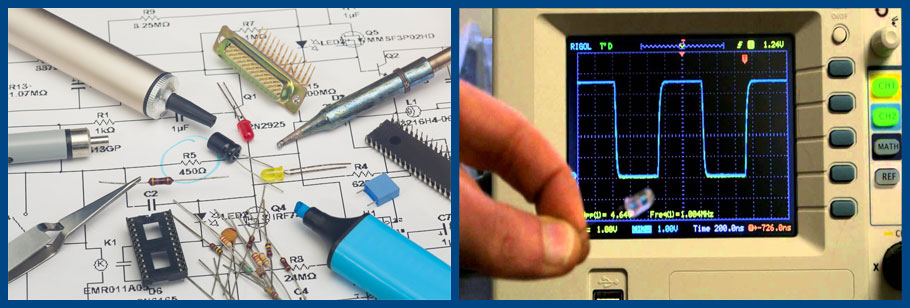Flame and gas detectors are critical safety devices used in various industries to detect the presence of flammable gases and flames. These detectors rely on printed circuit boards (PCBs) for their operation. PCB assembly for flame and gas detectors requires careful attention to ensure the reliability and functionality of these devices. In this article, we will discuss the precautions that need to be taken during the PCB assembly process for flame and gas detector products.
Component Selection: The selection of components is crucial for flame and gas detector PCB assembly. It is essential to choose components that are specifically designed for use in hazardous environments. These components should have high-temperature ratings, be resistant to corrosive gases, and have low power consumption.
PCB Design: The PCB design should consider the specific requirements of flame and gas detectors. The layout should be optimized for signal integrity, noise reduction, and thermal management. Proper grounding techniques should be employed to minimize electromagnetic interference (EMI) and ensure accurate readings.
ESD Protection: Electrostatic discharge (ESD) can damage sensitive electronic components. Proper ESD protection measures should be implemented during the assembly process. This includes using ESD-safe workstations, wearing grounded wrist straps, and using ESD-safe packaging for components.
Soldering Techniques: Flame and gas detector PCB assembly requires precise soldering techniques to ensure reliable connections. The use of a soldering iron with adjustable temperature control is recommended to prevent overheating and component damage. Proper soldering techniques, such as using the right amount of solder and avoiding solder bridges, should be followed.
Cleaning: After soldering, it is essential to clean the PCB to remove any flux residues or contaminants. The use of a suitable cleaning agent and proper cleaning techniques, such as ultrasonic cleaning or vapor degreasing, should be employed. Cleaning ensures the reliability and longevity of the flame and gas detector.
Testing and Calibration: Once the PCB assembly is complete, thorough testing and calibration are necessary to ensure the proper functioning of the flame and gas detector. This includes functional testing, sensitivity testing, and calibration of the detection thresholds. Specialized testing equipment and procedures should be followed to ensure accurate results.
Environmental Considerations: Flame and gas detectors are often exposed to harsh environmental conditions. The PCB assembly should consider these conditions and incorporate appropriate protection measures. This may include conformal coating to protect against moisture, dust, and corrosive gases, as well as the use of ruggedized enclosures for added physical protection.
Documentation and Traceability: Proper documentation and traceability are essential for flame and gas detector PCB assembly. Detailed records of component specifications, assembly processes, testing procedures, and calibration results should be maintained. This documentation ensures consistency, facilitates troubleshooting, and enables future product improvements.
Compliance with Standards: Flame and gas detectors are subject to various safety standards and regulations. The PCB assembly process should comply with these standards to ensure the safety and reliability of the final product. This may include adherence to standards such as ATEX, IECEx, UL, and CSA.
Ongoing Maintenance and Inspection: After the PCB assembly, regular maintenance and inspection are necessary to ensure the continued performance of the flame and gas detector. This includes periodic checks for component degradation, sensor calibration, and firmware updates. Regular maintenance helps prevent false alarms and ensures the device's reliability in critical situations.
In conclusion, flame and gas detector PCB assembly requires careful attention to detail and adherence to specific precautions. Component selection, proper PCB design, ESD protection, precise soldering techniques, cleaning, testing, environmental considerations, documentation, compliance with standards, and ongoing maintenance are all critical aspects of the assembly process. By following these precautions, manufacturers can ensure the reliability, accuracy, and safety of flame and gas detector products.
Flame Detector Market by Product (Single UV, single IR, Dual UV/IR, Triple IR, Multi IR), Connectivity, Industry (Oil & Gas, Energy & Power, Pharmaceuticals, Chemicals, Aerospace & Defense, Marine, Logistics, Automotive),the global flame detector market size is expected to reach USD 2.1 billion in 2027 from USD 1.7 billion in 2022, growing at a CAGR of 5.0% during the forecast period.
The main top flame detector brand companies in the world are:
JOHNSON CONTROLS
MSA SAFETY
ROBERT BOSCH
HONEYWELL
SIEMENS
CARRIER GLOBAL CORPORATION
EMERSON ELECTRIC
MINIMAX VIKING GMBH
HALMA
NOHMI BOSAI
HOCHIKI
DRAEGER
TELEDYNE TECHNOLOGIES
MICROPACK ENGINEERING
CIQURIX
ELECTRO OPTICAL COMPONENTS
FIKE CORPORATION
FIRE & GAS DETECTION TECHNOLOGIES
REZONTECH
SENSE-WARE
TRACE AUTOMATION
ESP SAFETY
FORNEY CORPORATION
JSC"ELECTRONSTANDART-PRIBOR"
AMBETRONICS ENGINEERS
If u are looking for professional china flame gas detectors electronic contract PCB assembly and box build manufacturing supplier, pls cotact us at : sales@topscom.com.cn



